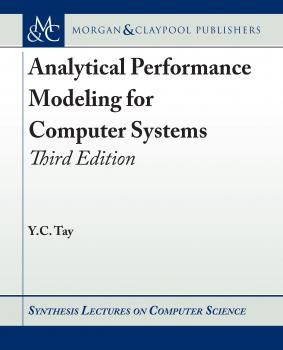Synthesis Lectures on Computer Science
Скачать книги из серии Synthesis Lectures on Computer ScienceCreating Autonomous Vehicle Systems
This book is the first technical overview of autonomous vehicles written for a general computing and engineering audience. The authors share their practical experiences of creating autonomous vehicle systems. These systems are complex, consisting of three major subsystems: (1) algorithms for localization, perception, and planning and control; (2) client systems, such as the robotics operating system and hardware platform; and (3) the cloud platform, which includes data storage, simulation, high-definition (HD) mapping, and deep learning model training. The algorithm subsystem extracts meaningful information from sensor raw data to understand its environment and make decisions about its actions. The client subsystem integrates these algorithms to meet real-time and reliability requirements. The cloud platform provides offline computing and storage capabilities for autonomous vehicles. Using the cloud platform, we are able to test new algorithms and update the HD map—plus, train better recognition, tracking, and decision models. This book consists of nine chapters. Chapter 1 provides an overview of autonomous vehicle systems; Chapter 2 focuses on localization technologies; Chapter 3 discusses traditional techniques used for perception; Chapter 4 discusses deep learning based techniques for perception; Chapter 5 introduces the planning and control sub-system, especially prediction and routing technologies; Chapter 6 focuses on motion planning and feedback control of the planning and control subsystem; Chapter 7 introduces reinforcement learning-based planning and control; Chapter 8 delves into the details of client systems design; and Chapter 9 provides the details of cloud platforms for autonomous driving. This book should be useful to students, researchers, and practitioners alike. Whether you are an undergraduate or a graduate student interested in autonomous driving, you will find herein a comprehensive overview of the whole autonomous vehicle technology stack. If you are an autonomous driving practitioner, the many practical techniques introduced in this book will be of interest to you. Researchers will also find plenty of references for an effective, deeper exploration of the various technologies.
Science Fiction Prototyping
Science fiction is the playground of the imagination. If you are interested in science or fascinated with the future then science fiction is where you explore new ideas and let your dreams and nightmares duke it out on the safety of the page or screen. But what if we could use science fiction to do more than that? What if we could use science fiction based on science fact to not only imagine our future but develop new technologies and products? What if we could use stories, movies and comics as a kind of tool to explore the real world implications and uses of future technologies today?
Science Fiction Prototyping is a practical guide to using fiction as a way to imagine our future in a whole new way. Filled with history, real world examples and conversations with experts like best selling science fiction author Cory Doctorow, senior editor at Dark Horse Comics Chris Warner and Hollywood science expert Sidney Perkowitz, Science Fiction Prototyping will give you the tools you need to begin designing the future with science fiction.
The future is Brian David Johnson’s business. As a futurist at Intel Corporation, his charter is to develop an actionable vision for computing in 2021. His work is called “future casting”—using ethnographic field studies, technology research, trend data, and even science fiction to create a pragmatic vision of consumers and computing. Johnson has been pioneering development in artificial intelligence, robotics, and reinventing TV. He speaks and writes extensively about future technologies in articles and scientific papers as well as science fiction short stories and novels (Fake Plastic Love and Screen Future: The Future of Entertainment, Computing and the Devices We Love). He has directed two feature films and is an illustrator and commissioned painter.
Table of Contents: Preface / Foreword / Epilogue / Dedication / Acknowledgments / 1. The Future Is in Your Hands / 2. Religious Robots and Runaway Were-Tigers: A Brief Overview of the Science and the Fiction that Went Into Two SF Prototypes / 3. How to Build Your Own SF Prototype in Five Steps or Less / 4. I, Robot: From Asimov to Doctorow: Exploring Short Fiction as an SF Prototype and a Conversation With Cory Doctorow / 5. The Men in the Moon: Exploring Movies as an SF Prototype and a Conversation with Sidney Perkowitz / 6. Science in the Gutters: Exploring Comics as an SF Prototype and a Conversation With Chris Warner / 7. Making the Future: Now that You Have Developed Your SF Prototype, What’s Next? / 8. Einstein’s Thought Experiments and Asimov’s Second Dream / Appendix A: The SF Prototypes / Notes / Author Biography







